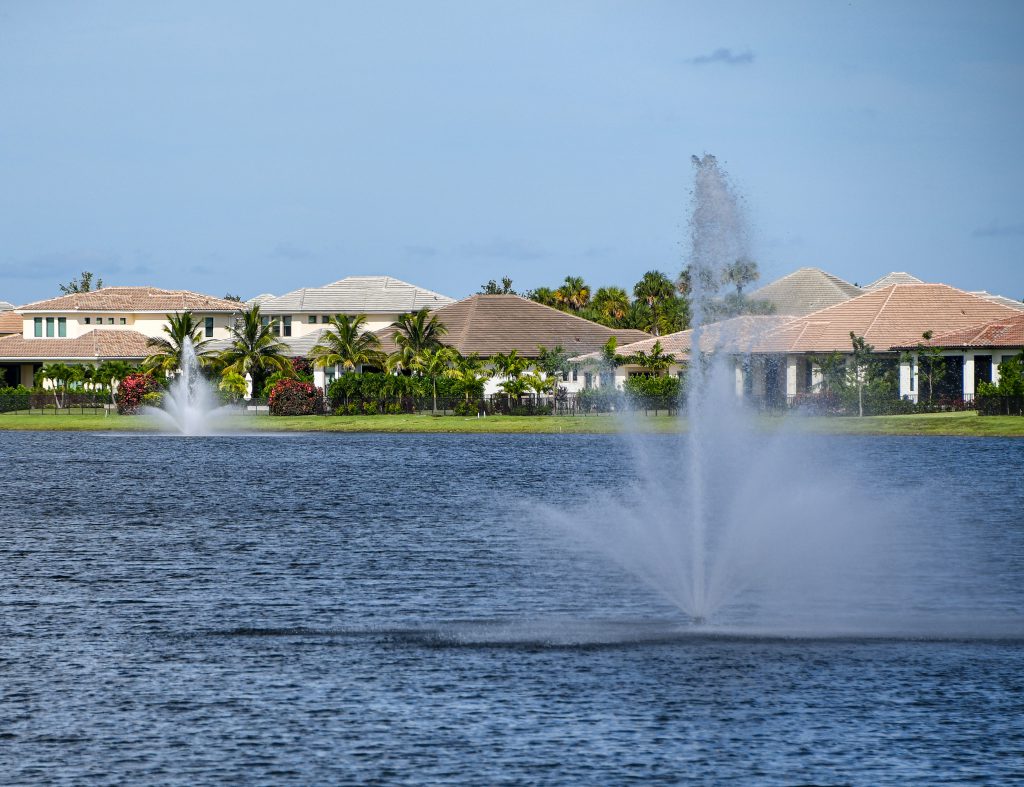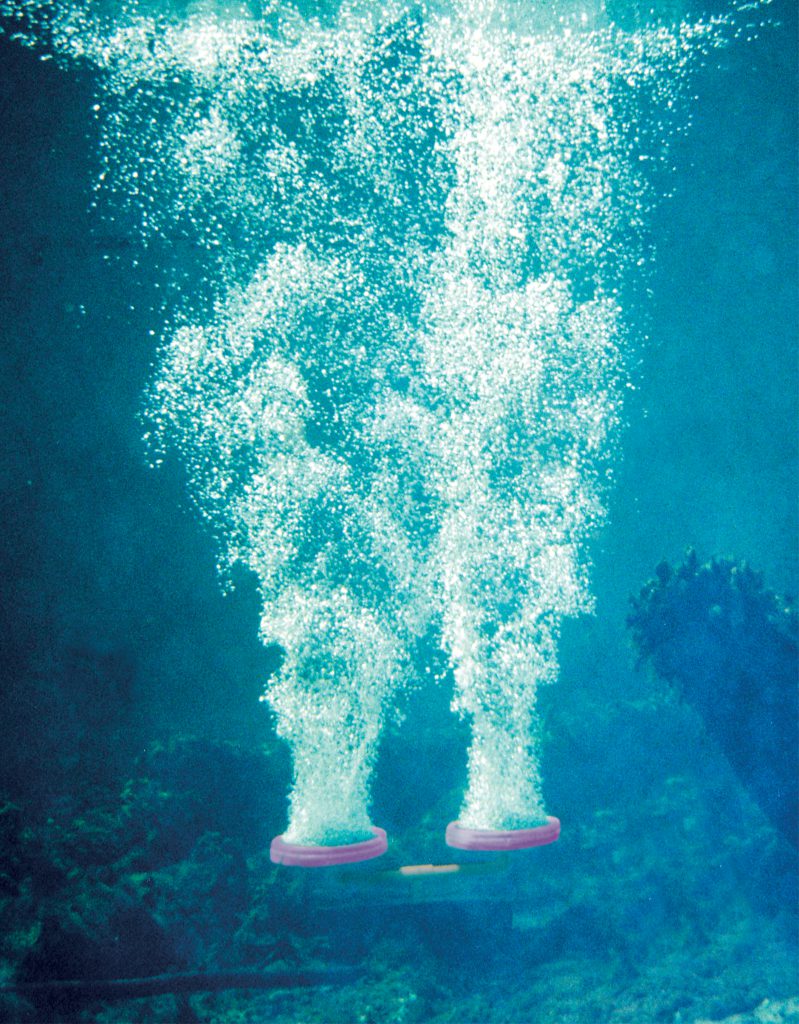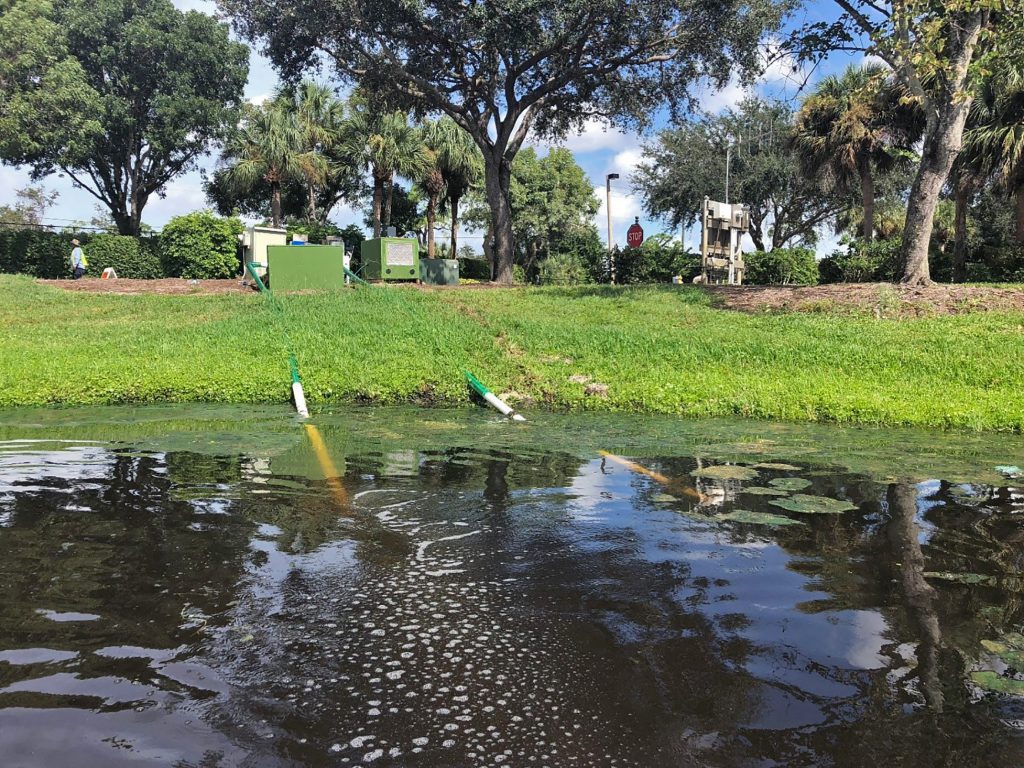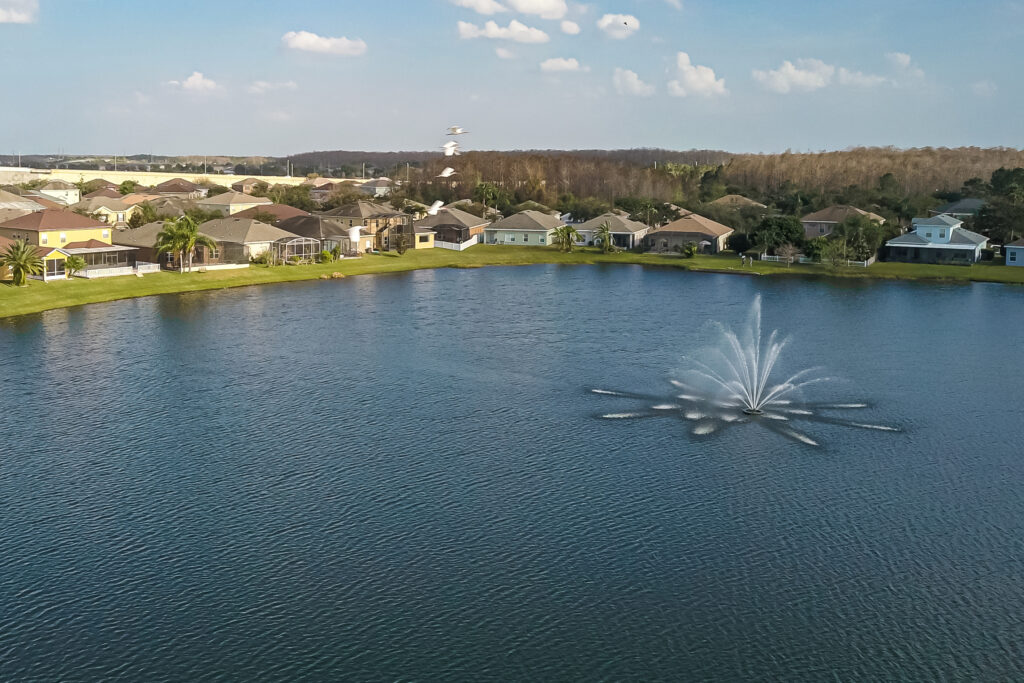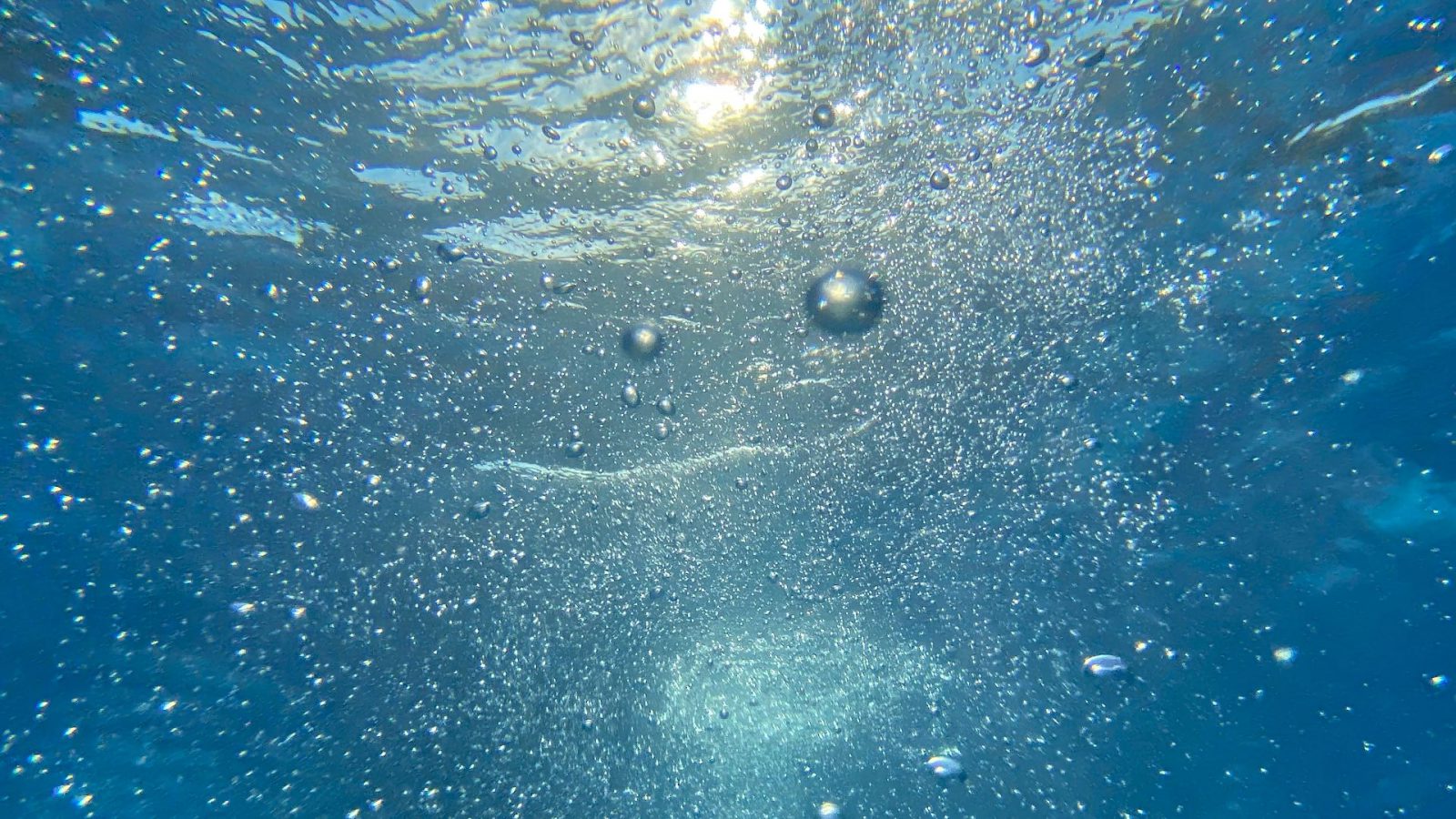
Back to Basics: Nanobubbles vs. Fountains vs. Aeration
Oxygen is essential to life, including the desirable life that lives below the surface of our lakes and ponds. When pollution, invasive aquatic weed growth and nuisance algae blooms cover the surface of the water, this prevents dissolved oxygen, or DO, from reaching the areas that need it. The result—poor water quality, bad odors, bottom muck, massive fish kills and potentially deadly toxic algae blooms.
Luckily, several lake and pond aeration solutions are available to naturally correct imbalanced DO conditions—each with their own unique benefits and limitations:
Floating Fountains
Floating and architectural fountains are one option for aeration in lakes and ponds. In addition to serving as an aesthetic focal point, properly-sized fountains provide essential water column mixing in shallow waterbodies. As fountain water falls from the air in pleasing patterns, it bursts across the surface, accelerating the release of submersed gases, helping to reverse nutrient pollution, and introducing beneficial DO into the top layer of water. When the fountain is turned off, however, these benefits can subside.
Submersed Aeration
Another form of aeration that is recommended in large lakes and ponds is submersed aeration. In contrast to fountains, submersed aeration systems utilize an on-shore compressor to pump air through subsurface tubes and diffusers that oxygenate and circulate the water from bottom to top. As bubbles rise from the depths to the surface, they increase DO throughout the waterbody and disrupt undesirable stratification. Like floating fountains, submersed aeration systems help convert nutrients to more diluted forms that cannot sustain nuisance aquatic weed and algae growth, though they do not directly target these infestations. For the best results, these systems should be placed in lower depths as they may not properly circulate shallow water.
Nanobubble Technology
New oxygenation alternatives, like nanobubble technology, have helped maximize the benefits of both fountains and submersed aeration systems. Similar to “traditional” submersed aeration systems, nanobubbles are produced by compact on-shore generators, but they are about 1 million times smaller than ordinary bubbles and have a strong negative surface charge. As a result, they provide long-lasting oxygenation within the water column—and even the sediments—for up to 2-3 months without popping. Because nanobubbles do not rise to the surface, they do not offer the vertical mixing benefits provided by fountains and standard diffusers.
Nanobubble Technology Results
- 72 Hours After Nanobubble Treatment
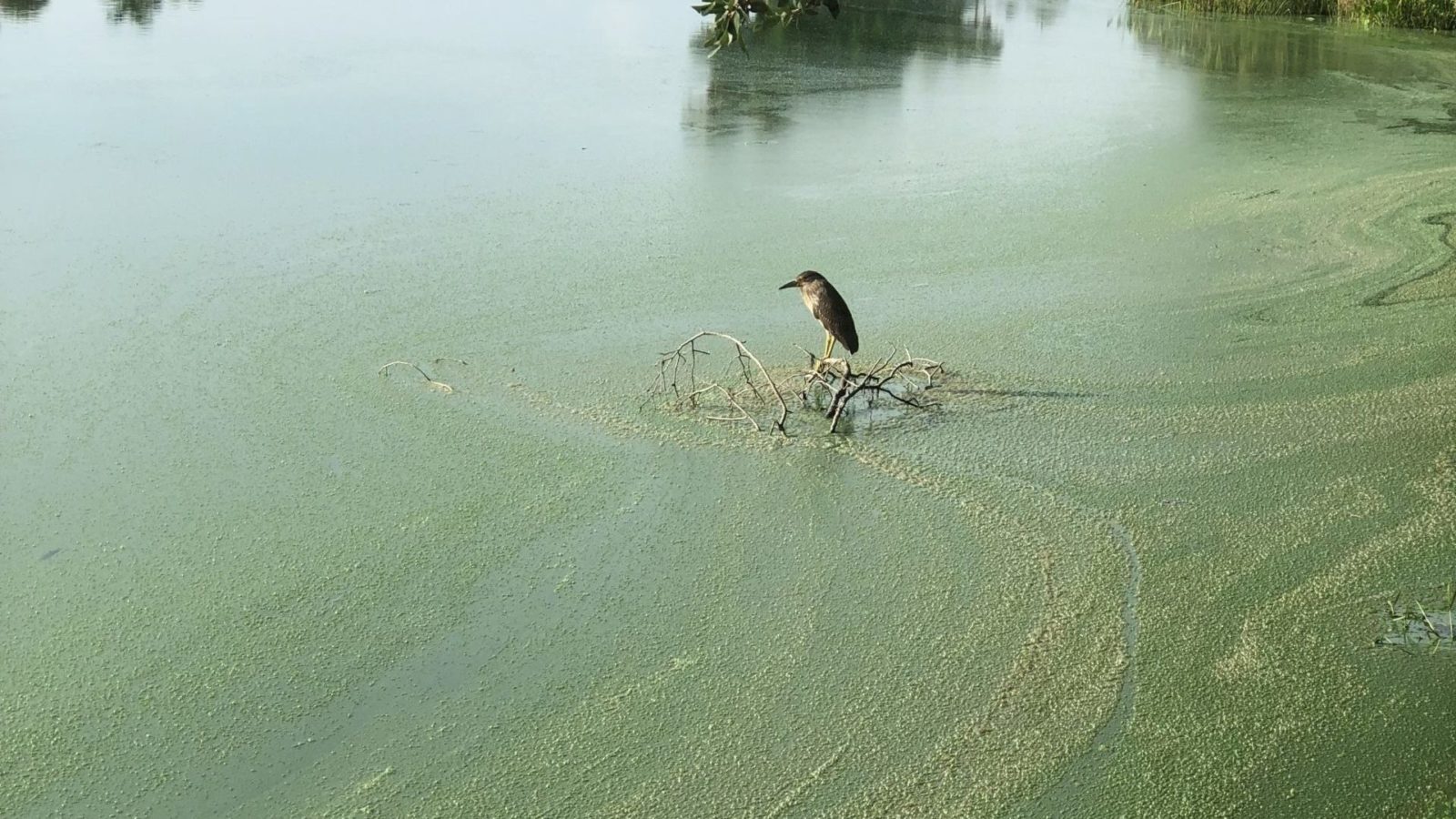
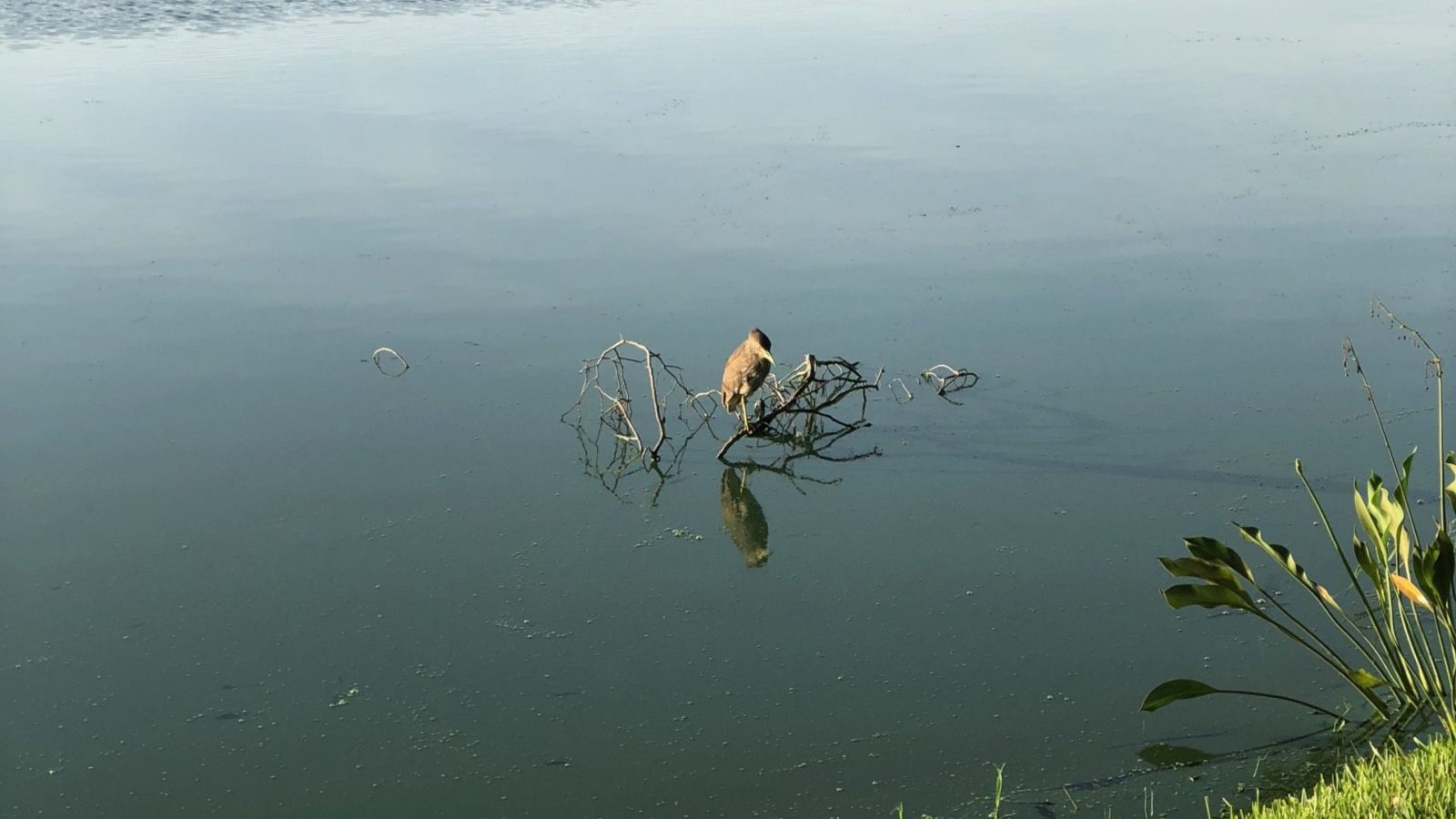
Nanobubbles are not only effective at reducing odors, breaking down bottom muck and restoring water quality; some manufacturers have registered their equipment as a pesticidal device with the Environmental Protection Agency (EPA), meaning it can be used to naturally eradicate nuisance algae and toxic cyanobacteria. With nanobubbles, you can naturally maintain balanced water quality and control algae for a clean, beautiful lake or pond.
Determining the System for Your Lake
Each of these lake and pond solutions works differently—and they accomplish very different things. Using them in a variety pairing based on your given situation may help better target your unique water quality problems. No matter how you use your waterbody, it’s worth leveraging these natural management tools to ensure the future of your freshwater resource.








